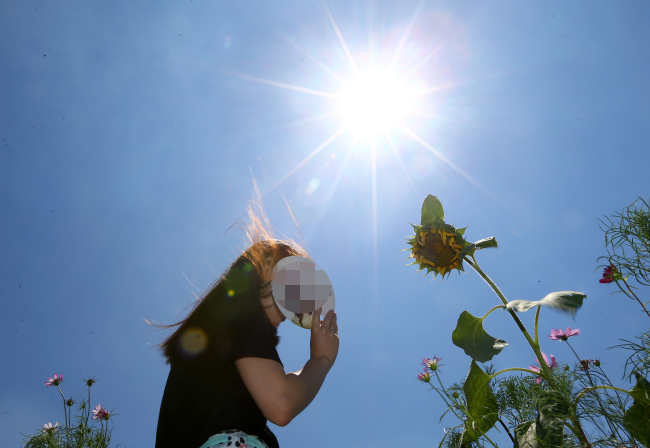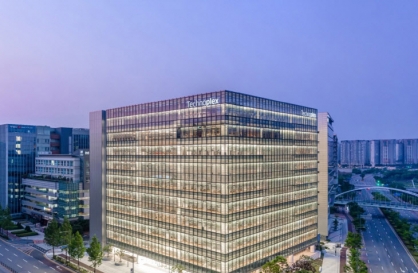The number of sunstroke patients surged last week, with seven deaths reported so far, as a heat wave continues to grip the peninsula, officials said Tuesday.
According to the Korean Centers for Disease Control and Prevention, over 610 people suffered from heatstroke this year, with half of them being diagnosed between July 26 and Aug. 1. It showed a 7.3 percentage point jump compared to the week before. Only one related death was reported a year before.

The sunstroke figure includes anyone who visited the emergency room due to heat exhaustion, heatstroke or heat convulsions.
The elderly accounted for 60 percent of those hospitalized. Men took up 74 percent of the total. More than 80 percent of the sunstroke cases took place outdoors.
On Tuesday, heat wave warnings were raised in the southern part of the country and Gangwon Province with temperatures in the region reaching as high as 35 degrees Celsius.
The heat wave advisory was also issued in some cities in Gyeonggi Province and the Chungcheong region as the temperature hit 33 degrees Celsius.
The Korea Meteorological Agency said the heat wave would continue throughout the week along with tropical nights. Seoul’s daytime temperature may reach 33 degrees Celsius by the end of the week, with a possibility of a heat wave advisory issuance, it said.
In a separate report, Incheon was found to be the most vulnerable city to the sweltering heat.
The National Institute of Meteorological Research said in its study that Incheon started to report deaths from sunstroke at the lowest temperature among the regions, followed by Seoul and Daejeon. The death toll from heatstroke started to rise as the temperatures started to reach 28 degrees Celsius on average in the cities.
Southern areas such as Busan and Daegu, on the other hand, reported deaths from sunstroke when the temperature reached 30 degrees Celsius on average.
Cities with lower temperatures in general are more vulnerable to heat waves, the report said.
“For Daegu, the city surrounded by mountains experiences high temperatures more frequently than other cities. Daegu seems to have socially and culturally adapted more to the heat,” the institute said.
The study analyzed city’s heat wave adaptation level between 1991 and 2010 based on various factors such as the death toll, population composition, medical service quality and economic and environmental factors.
The heat has also been affecting livestock as the farmers reported increasing deaths.
According to insurance company NongHyup Property and Causality Insurance Co., over 1.23 million livestock were killed by the high temperature between June 28 and Aug. 2.
Of the dead, chickens took the largest share with about 1.2 million, followed by ducks and pigs, with some 23,000 and 420, respectively.
The compensation cost is expected to reach a record high of around 3.2 billion won ($2.7 million) this year since the company introduced heat wave insurance in 2012, the firm said.
By Lee Hyun-jeong (rene@heraldcorp.com)





![[Weekender] Korean psyche untangled: Musok](http://res.heraldm.com/phpwas/restmb_idxmake.php?idx=644&simg=/content/image/2024/05/02/20240502050841_0.jpg&u=)


![[Eye Interview] 'If you live to 100, you might as well be happy,' says 88-year-old bestselling essayist](http://res.heraldm.com/phpwas/restmb_idxmake.php?idx=644&simg=/content/image/2024/05/03/20240503050674_0.jpg&u=)








![[Herald Interview] Director of 'Goodbye Earth' aimed to ask how we would face apocalypse](http://res.heraldm.com/phpwas/restmb_idxmake.php?idx=652&simg=/content/image/2024/05/03/20240503050732_0.jpg&u=)
